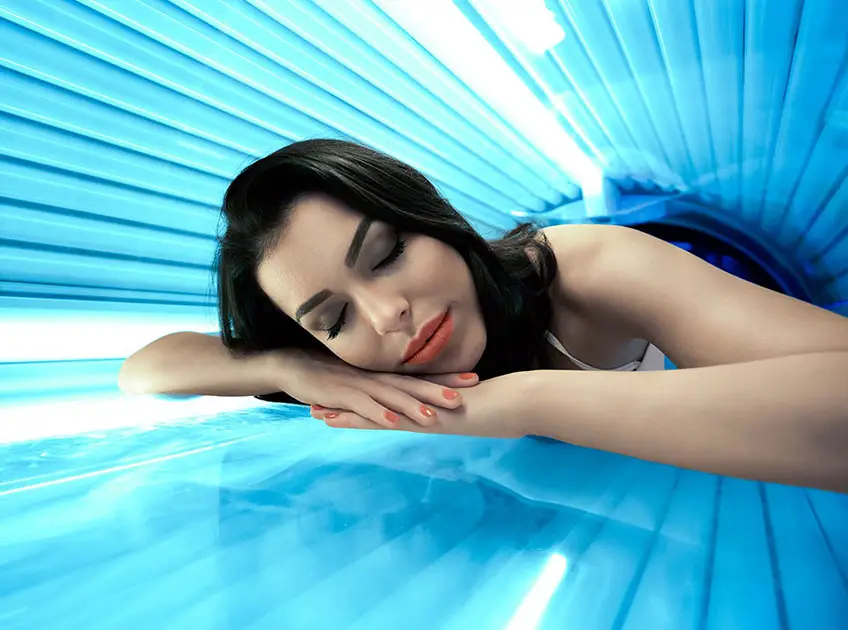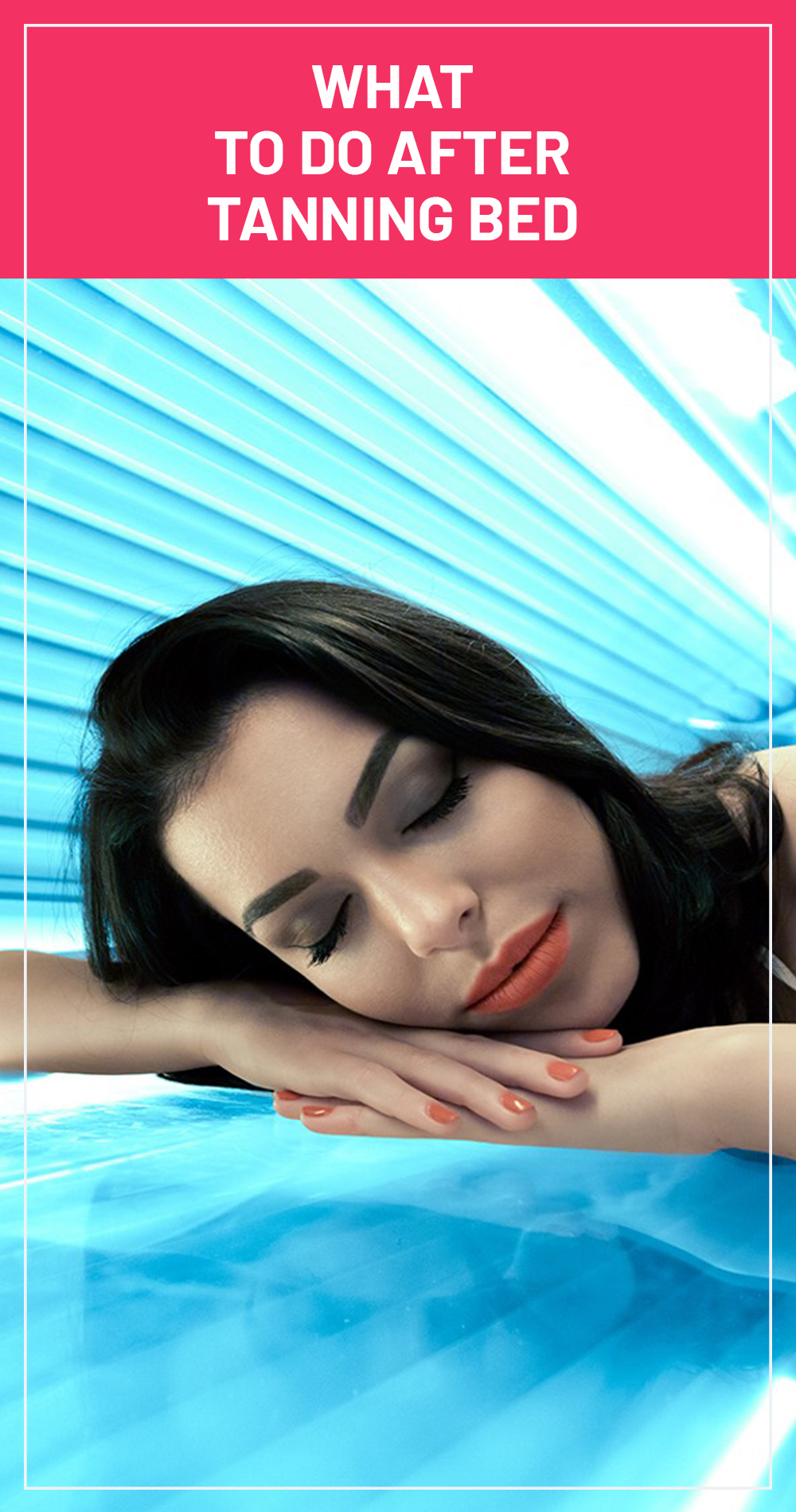
Important: This article is for informational purposes only. Please read our full disclaimer for more details.
Even though developing a tan in a tanning bed seems a safer option, it still exposes your skin to harmful UV rays. According to dermatologists, 20 minutes in a tanning bed is equal to 2 hours under the sun. Therefore, the chances of skin damage are equal. Whether you tan under the sun or in the tanning bed, taking care of your skin is important. It prevents sunburn and dry skin and ensures a long-lasting tan.
Some of the best ways to keep your skin healthy in the tanning bed are
- Stay hydrated
- Keep your skin moisturized
- Avoid showering for a day
- Use tanning lotions
Apart from these, having a healthy diet and including food rich in antioxidants is also useful.
If you don’t take enough care of your skin after spending time in a tanning bed, your skin health will be affected, and the result of the tan will not be as impressive as it could be. Drying, peeling, and creaking of skin will be the common problems.
How To Take Care Of Your Skin After A Tanning Bed Session?

Different factors play a role in improving skin health, and the cumulative effect of different skincare routines helps to get skin that stays naturally healthy, beautiful, and glowing.
Some tips you need to follow include
1. Drink Enough Water
Tanning makes the skin thirsty. You must keep your skin well-hydrated from the inside. It can be achieved by drinking a few extra glasses of water every day. It will prevent dryness and lightheadedness. As the skin gets dry from tanning, you need to replenish the moisture in the body. Make sure you bring a bottle of water to the salon and finish it as the session completes. Drink more water on consecutive days to ensure skin cells get enough hydration to rejuvenate and refresh. It will help to keep the skin soft and supple.
2. Keep Skin Moisturized

As already said, staying in the tanning area for a few minutes dehydrates the skin. So, apart from drinking glasses of water, you also need to supplement the skin with extra layers of moisturizer. Use a high-quality moisturizer as per your skin type and apply it. Since your skin has recently been exposed to spray tan chemicals, give it time to recover and apply moisturizer. Your moisturizer should be oil-free, paraben-free, and preferably organic. It is more beneficial if your moisturizer has tea tree oil or aloe vera. Both these are natural ingredients and soothe the skin after the tanning session. Also, they reduce redness and inflammation. Apply moisturizer twice daily to keep skin deeply moisturized and well-nourished. Besides making the skin soft and supple, moisturizer holds the tan better and helps keep it longer. To get the most out of your moisturizer, apply it right after coming out of the shower when the skin is still moist. It helps to lock in extra hydration.
3. Avoid Showering Immediately
Once you leave the tanning bed, wait for at least 4-5 hours to shower, but not more than 24 hours. It will allow the tanning solution to stay and develop the desired skin tone. Even though feeling greasy and sweaty after the tanning session is obvious, waiting for at least 4 hours is worth the time spent in the tanning bed. If you shower immediately, the tanning solution will wash off, leaving an uneven and patchy tan.
4. Avoid Sun Exposure
When you were in the tanning bed, your skin was exposed to ultraviolet radiation. It has come under stress already, and going in the sun will only enhance this stress. The chances of getting sunburn will increase. Give time to your skin to recover and, therefore, stay indoors. For the same reason, you should avoid taking the next tanning session on a consecutive day. Wait for 3-4 days before the next tanning bed session. Overexposing the skin to the UV rays may affect the skin and can cause skin damage. Remember to wear broad-spectrum sunscreen with an SPF of more than 20 while going out for routine work. Also, apply enough moisturizer to prevent it from getting dry and flaky.
5. Use Tanning Lotions
Tanning lotions work wonders in maximizing the stay of your tan. At the same time, it provides everything that is needed to keep skin nourished and moisturized. Since tanning lotions differ for indoor and outdoor tanning, make sure you pick the right product. Outdoor lotions have different ingredients, so using them in the tanning bed may not help. It can cause skin irritation. Use a high-quality tanning lotion and develop a gorgeous skin-kissed tan.
6. Treat Yourself
As already said, having antioxidant-rich food helps abundantly; enjoy some dark chocolate. It will help fight free radicals that can help the skin to heal naturally after a tanning bed session.
7. Do Not Shave Or Wax Immediately After Tanning Bed
Avoid these hair removal practices for at least 12 hours, as they can also wipe off the tanning solution and lead to uneven tanning. Also, the chances of your tan fading quickly increase.
Final Words
Tanning bed is a good alternative when you don’t have time to bask under the sun. However, keeping the skin healthy is equally essential. After all, healthy skin is far better than sunburnt and dehydrated skin.
You Might Also Like:
- Can You Tan With Sunscreen
- Can You Still Get A Tan from Clouds? How long should I sit
- Can You Get A Tan Through A Window?
- Can You Get Tan In The Shade
- Can You Tan With Makeup On
- Can You Tan After Botox
- Can You Tan In The Winter?
- How to Tan with Fair Skin and Freckles?
- Can You Wear Makeup After Spray Tan? How Much Time To Wait
- What To Wear In A Tanning Bed
- How To Use A Tanning Bed Safely
- How Long Does a Spray Tan Last? Do’s and Don’ts
- How To Use Coconut Oil For Tanning?
- How To Tan Faster In A Tanning Bed: 6 Ways
- Can You Shave After a Spray Tan? How to do
- 5 Best Tanning Goggles To Protect Your Eyes
- 10 Best Tingle Tanning Lotions
- Shower After Tanning: What Is The Right Way To Shower After Tanning?
- 7 Best Indoor Tanning Lotions For Face
- 7 Best Tanning Bed Lotions For Fair Skin
















